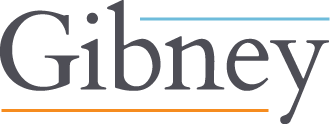On January 30, 2019, the Department of Homeland Security (DHS) announced that it will publish a final rule on January 31, 2019 to amend regulations governing the H-1B cap process. Some changes will take effect for H-1B cap petitions filed this year (April 1, 2019) while other changes will be implemented for cap petitions filed in fiscal year (FY) 2021.
New this Year: Reversed H-1B Cap Lottery
This year, U.S. Citizenship and Immigration Services (USCIS) will reverse the order of the H-1B cap lottery. Currently there are two H-1B cap lotteries: the regular H-1B cap lottery and the H-1B cap lottery for U.S. advanced-degree holders, for which an additional 20,000 visas are available. Historically, USCIS has held the advanced degree lottery first and petitions not selected in that lottery were added to the regular lottery. The new rule will reverse the lottery. USCIS will conduct the regular lottery first, and upon completion, USCIS will conduct the advanced degree cap lottery for the remaining petitions for beneficiaries holding advanced degrees from U.S. universities. USCIS predicts that this change will result in 16% more advanced-degree holders being selected in the H-1B regular lottery.
Implementation of H-1B Cap Electronic Registration Requirement Postponed
The final rule also will introduce an electronic registration requirement for petitioners seeking to file H-1B cap-subject petitions; however, this registration requirement will be suspended for the upcoming FY2020 H-1B cap season. USCIS expects to implement this registration requirement for future cap seasons, once user testing has been completed and it can be ensured that the system and process are fully functional. For information on how the electronic registration requirement is expected to work, please see our alert USCIS Proposes to Modify FY2020 H-1B Cap Process.
Postponement of the registration requirement until next year has been generally met with relief given widespread concerns about the feasibility of creating and successfully implementing a system for this year’s H-1B cap filing period. Looking ahead, USCIS indicated it will conduct outreach to ensure petitioners understand how to access and use the system prior to implementation next year. Once implemented, the registration system is expected to lower costs for employers and increase government efficiency in managing the H-1B cap process and adjudicating H-1B cap petitions.
What Should Employers Do Now?
With increasing demand for H-1B workers, we encourage employers to identify potential H-1B cap cases now and work with immigration counsel to take appropriate steps to ensure timely preparation and filing of cases when the H-1B cap filing period opens on April 1, 2019. Last year, the H-1B cap petition quota was reached during the first week of filing for the sixth consecutive year. We anticipate that the H-1B quota will be reached quickly again this year. This means that employers should plan to file all H-1B cap petitions by April 1, 2019. Prior to filing any petitions, employers must work proactively with counsel to vet cases for eligibility, obtain credential evaluations, and secure Labor Condition Applications from the U.S. Department of Labor.
If you have any questions about this alert, please contact your Gibney representative or email info@gibney.com.
The general information provided herein is not intended to serve as a source of legal advice for any purpose. Please contact your designated Gibney representative or immigration counsel for specific legal advice.

